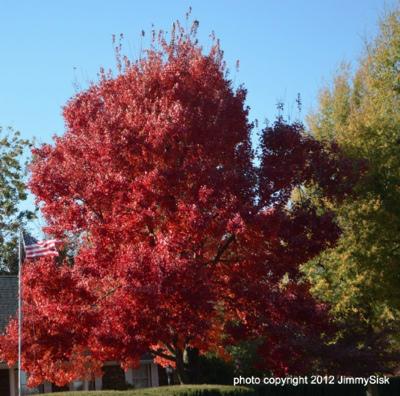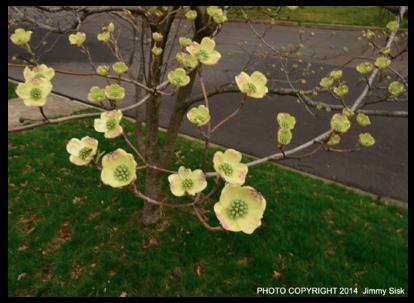
Submitted by
Dee Loflin, SMT Manager/Editor
Dexter, Missouri - A special luminaria ceremony during the American Cancer Society Relay For Life of Stoddard County remembers those lost to cancer and honors those who have battled and won. The luminaria candle lighting to represent these individuals is on Friday, May 2nd at 10:00 p.m. at Dexter West City Park.
Anyone desiring to purchase a luminaria may do so by contacting Courtney White at 417-861-6500. Each luminaria candle is $5.00 and can be In Memory Of or In Honor Of a loved one.
“It will be beautiful when all the bags with candles are illuminated around the track,” said Jennifer Hartlein, Event Co-chair. “We hope to sell enough to light the entire walking track.”
Relay For Life is a fun-filled, overnight event. Teams of eight to 15 members gather with tents and sleeping bags to participate in the largest fundraising walk in the nation. Relay For Life unites friends, families, businesses, hospitals, schools and churches ... people from all walks of life. Teams seek donations prior to the Relay, all with the goal of supporting a cure for cancer.
Relay For Life officially begins at 4:00 pm on May 2nd. Stoddard County cancer survivors will kick off the Opening Ceremonies at 6:30p.m. with the official survivors’ lap; then the rest of the participants will join the fun. Information about purchasing a luminaria, forming a team or walking in the survivors’ lap is available by calling 573-334-9352. For information on cancer, call the American Cancer Society’s 24-hour help line at 1-800-227-2345 or visit cancer.org.
The American Cancer Society combines an unyielding passion with nearly a century of experience to save lives and end suffering from cancer. We save lives by helping people stay well by preventing cancer or detecting it early; helping people get well by being there for them during and after a cancer diagnosis; by finding cures through investment in groundbreaking discovery; and by fighting back by rallying lawmakers to pass laws to defeat cancer and by rallying communities worldwide to join the fight.

Written by
Dee Loflin, SMT Manager/Editor
Dexter, Missouri - The Spark of Hope Relay for Life Team will host their 5th Annual Community Fair and Spring Fest Pageant which will be held this Saturday, April 26th from 10 a.m. – 4 p.m. at the Stoddard County Fair Grounds in Dexter, Missouri.
Support local vendors and crafters and most of all; support the Stoddard County Relay for Life, which will be held on Friday, May 2nd from 4 p.m. – 1:30 a.m.
Each booth will be charged $20 and will be donated to the 2014 Stoddard County Relay for Life on behalf of the Spark of Hope team.
There will be a variety of vendors to show from. Several home-based businesses have already signed up. Younique, Papparazzi Jewelry, Scentsy, and Origami Owl to name a few.
They will also be hosting a 50’s style Pageant by Jill Miller Worley. Entrance fee is only $30. Just contact pbpageants@hotmail.com for more information.
If you love old cars and trucks there will be a Gary Don Dowdy Memorial Car, Truck, Tractor & Motorcycle Show hosted by the Kenady-Hanks American Legion Post 59 of Dexter. If you would like to enter the car show contact Eric Smith at 573-718-8756 or dextercarshow@gmail.com.
For more information contact Team Captain Jamie Mays at 573-421-4173 or dextercraftfair@yahoo.com. They all have a Facebook page. Just click HERE.

Dee Loflin, SMT Manager/Editor
National Arbor Day is recognized on the last Friday of April, which is April 25 for 2014. Each state determines its Arbor Day based on its unique climate and weather patterns. Missouri has been observing Arbor Day since 1886 when the General Assembly declared that the first Friday in April should be set aside for the appreciation and planting of trees.
This year’s Arbor Day in Missouri has been recognized through a proclamation by Governor Jeremiah “Jay” Nixon as April 4. According to the proclamation: forests cover approximately one-third of the state; provide outdoor recreation, wildlife habitat, natural beauty, and watersheds for stream and rivers; provide employment for 33,000 people who convert trees into essential products; contribute beauty and shade to urban, suburban, and rural areas while creating a more pleasant and healthful environment; and Missouri will continue to benefit from its forests for succeeding generations through tree planting and conservation.
In celebration of Arbor Days and in cooperation with the Missouri Department of Transportation’s (MoDOT) “Trees for Tomorrow” program, MDC distributes nearly 100,000 native tree seedlings from its George O. White State Nursery to fourth-grade classes from more than 1,300 schools throughout the state each spring.
MoDOT supports the production and distribution of the trees to offset the natural resources it may disturb during construction activities. The seedling distribution supports MDC’s Discover Nature Schools program, which provides grade-appropriate curriculum and outdoor, hand-on activities to help students learn about the importance of conservation.
Get more information from MDC on backyard tree care, including proper tree selection and planting tips, online at mdc.mo.gov/node/3321.
TREES WORK
During Arbor Days and every day, MDC’s “Trees Work” public-awareness campaign reminds people how trees work for our wallets, health, families, communities, environment, and economy.
Trees Work for Our Wallets
Shade from two large trees on the west side of a house and one on the east side can save up to 30 percent of a typical residence's annual air conditioning costs.
Trees placed as windbreaks around buildings can save up to 25 percent on heating costs.
Street trees in neighborhoods increase sale prices of houses by an average of $8,870.
Trees Work for Our Health
Views of nature assist at the workplace. Employees with views of nature report 15 percent fewer illnesses and feel more enthusiastic and less frustrated than those without.
Those who commute along tree-lined roads remain calmer and drive less aggressively than those who drive along less treed roads.
Tree-lined streets are more walkable, encouraging more active lifestyles, which decreases obesity and improves heart health.
100-foot plantings of tall trees can reduce noise by 50 percent.
Trees Work for Our Families
Symptoms of Attention Deficit Disorder in children are relieved after spending time in treed areas. Kids can better concentrate, complete tasks, and follow directions after playing in natural settings. Contact with nature helps children develop imagination, creativity, and social relationships.
Trees along streets promote physical activity in children and increase longevity of the elderly.
One of the most effective means of protecting children from sun damage is to plant shade trees where they play.
Trees Work for Our Communities
A 10-percent increase in trees in a neighborhood reduces crime by 12 percent.
Trees improve downtowns. People are willing to spend 12 percent more for goods and services in downtowns with trees, and spend more time shopping and come back more frequently.
People tend to be more familiar and socialize more with neighbors in neighborhoods with trees.
Trees Work for Our Environment
Covering more than one-third of the state, Missouri trees and forests protect soil from erosion and filter water, provide oxygen needed to breathe, and clean the air by trapping and storing pollution.
Missouri forests and trees provide habitat for an incredible diversity of plants and animals that could not exist without them, along with a wealth of outdoor recreational opportunities and breathtaking scenic beauty.100 mature trees intercept about 100,000 gallons of rainfall per year, reducing runoff and providing cleaner water.
The net cooling effect of a young, healthy tree is equivalent to 10 room-size air conditioners operating 20 hours a day.
Missouri’s forests store more than 5 million tons of carbon. Each year, an acre of forest captures between one and four tons of additional carbon.
For each pound of new wood that grows, the tree removes about 1.8 pounds of carbon dioxide from the air and produces 1.3 pounds of oxygen.
Trees Work for Our Economy
Missouri trees and forests provide lumber and other wood products used around the state and around the world.
Missouri’s forest products industry contributes approximately $7.3 billion to the state economy annually, supports 41,200 jobs, and generates $610 million in taxes.
Trees along streets in Missouri communities provide $148 million annually in benefits, including energy savings, increases in property values, and storm-water retention.
For more information on how Trees Work, go online to mdc.mo.gov/node/19333.
WITHOUT TREES…
MDC’s Trees Work public-education campaign is holding a contest encouraging people to finish the phrase “Without Trees...” The winning slogan will be listed on the next poster in the Trees Work series. Simply email “Without Trees...” slogans to treeswork@mdc.mo.gov by April 30. The winner will also receive a complete set of the “Without Trees...” handcrafted letterpress posters plus 10 extra posters with their slogan to give to family and friends. For more information and to see current posters, visit mdc.mo.gov/node/19333.

Dee Loflin, SMT Manager/Editor
Nick Kuhn, forestry field programs supervisor for the Missouri Department of Conservation, says extremely cold weather can actually cause flowering trees to blossom earlier than they might under more normal conditions.
“Nothing about this year’s weather has been normal so far,” says Kuhn, “but if things take a turn toward more average spring weather, we could start seeing redbud blossoms very soon, and dogwoods not far behind.”
Serviceberry and redbuds typically start blooming in late March. Dogwood flowers typically open in mid-April, though the actual date in any given year can vary by as much as three weeks. Kuhn says he would not be surprised to see dogwoods blooming in early April this year … if the weather remains average or warmer.
“The timing of tree flowering and green-up is affected to some degree by day length,” says Kuhn, “similar to the behavior of many animals. But weather plays a pivotal role, too. Assuming there is no late cold snap, the rapid shift from late extreme cold to unseasonably warm weather is likely to speed up flowering and associated changes in all trees, not just dogwoods and redbuds.”
Kuhn says tree buds and new growth also take on visible colors in the spring. New twigs are not always green. They can be red or orange, depending on species. Swelling buds can also turn attractive reds, oranges, and yellows, adding subtle dimensions to spring colors.
Trees in urban settings normally bloom earlier than those in the wild, due to heat retention by asphalt and concrete. The following routes provide good viewing for those who want to see wild trees in bloom.
Highway 19 between Montgomery City and Thayer
Highway 5 between Versailles and Gainesville
Highway 142 between Doniphan and Bakersfield
Highway 72 between Cape Girardeau and Rolla
Highway 63 between Columbia and Thayer
I-44 between Eureka and Rolla
Highway 50 between Eureka and Jefferson City
Highway 60 between Poplar Bluff and Springfield
For more information about Missouri’s native, spring-flowering trees, such as flowering dogwood, visit mdc.mo.gov/node/989.
Kuhn says accelerated blooming schedules also could shorten the time when spring breezes are laden with tree pollen – great news for allergy sufferers.
According to Kuhn, trees across much of Missouri are well on their way to recovering from the extremely stressful drought and heat of 2012. Missouri received more rain last year, and the summer was not nearly as hot as in 2012.
“If this year’s summer weather is bad I would still only be somewhat concerned for tree health,” he says. “If this year is not bad or even if it goes bad in mid-August or later, trees that went into the summer healthy would get along pretty well.”
He went on to say that landscape trees in parts of the state that experienced drought in both 2012 and 2013 will need supplemental watering well into the summer months to regain their vigor.
“If they made it this long they must be tough, so give them water and mulch, but do not fertilize other than low rate slow-release fertilizer this spring.”
Kuhn cautioned that high-nitrogen fertilizer, which typically is used on lawns, can cause excessively fast growth in trees. This rapid growth often can’t be sustained in hot, dry weather, causing the trees to look poor later in the summer. Regular watering – deep soaking every two weeks – can prevent this.
For more information about caring for trees, visit mdc.mo.gov.
Photograph courtesy of photographer Jimmy Sisk. Photo taken in Charleston, Missouri prior to the Charleston Dogwood Azalea Festival.

Submitted by
Dee Loflin, SMT Manager/Editor
United States - No enthusiastic sky-watcher misses a total eclipse of the moon, and if weather permits, neither should you!
If it’s cloudy in your part of the world, then you can also watch the eclipse live on Space.com, courtesy of NASA, the Slooh community telescope and the Virtual Telescope Project.
The spectacle is often more beautiful and interesting than one would think. During the time that the moon is entering into and later emerging from out of the Earth's shadow, secondary phenomena may be overlooked.
This first total lunar eclipse of 2014 is set to begin tonight (April 14) into the wee hours of Tuesday morning (April 15). The lunar eclipse is set to begin at about 2 a.m. EDT (0600 GMT), and it should last about 3.5 hours. The eclipse should be visible, weather permitting, through most of North America and part of South America.

